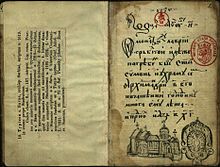
In the practice of Christianity, canonical hours mark the divisions of the day in terms of fixed times of prayer at regular intervals. A book of hours, chiefly a breviary, normally contains a version of, or selection from, such prayers.

Old Believers, also called Old Ritualists, are Eastern Orthodox Christians who maintain the liturgical and ritual practices of the Russian Orthodox Church as they were before the reforms of Patriarch Nikon of Moscow between 1652 and 1666. Resisting the accommodation of Russian piety to the contemporary forms of Greek Orthodox worship, these Christians were anathematized, together with their ritual, in a Synod of 1666–67, producing a division in Eastern Europe between the Old Believers and those who followed the state church in its condemnation of the Old Rite. Russian speakers refer to the schism itself as raskol (раскол), etymologically indicating a "cleaving-apart".
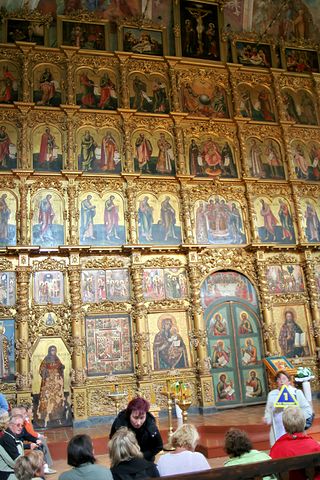
The Byzantine Rite, also known as the Greek Rite or the Rite of Constantinople, is a liturgical rite that is identified with the wide range of cultural, devotional, and canonical practices that developed in the Eastern Christian church of Constantinople.

Byzantine music originally consisted of the songs and hymns composed for the courtly and religious ceremonial of the Byzantine Empire and continued, after the fall of Constantinople in 1453, in the traditions of the sung Byzantine chant of Eastern Orthodox liturgy. The ecclesiastical forms of Byzantine music are the best known forms today, because different Orthodox traditions still identify with the heritage of Byzantine music, when their cantors sing monodic chant out of the traditional chant books such as the Sticherarion, which in fact consisted of five books, and the Irmologion.

The Holy Lavra of Saint Sabbas, known in Arabic and Syriac as Mar Saba and historically as the Great Laura of Saint Sabas, is a Greek Orthodox monastery overlooking the Kidron Valley in the Bethlehem Governorate of Palestine, in the West Bank, at a point halfway between Bethlehem and the Dead Sea. The monks of Mar Saba and those of subsidiary houses are known as Sabaites.

Alphabetical list of Eastern Christianity-related articles on English Wikipedia
A kontakion is a form of hymn in the Byzantine liturgical tradition.

The Euchologion is one of the chief liturgical books of the Eastern Orthodox and Byzantine Catholic churches, containing the portions of the services which are said by the bishop, priest, or deacon. The Euchologion roughly corresponds to a combination of the missal, ritual, and pontifical as they are used in Latin liturgical rites. There are several different volumes of the book in use.
The Paschal troparion or Christos anesti is the characteristic troparion for the celebration of Pascha (Easter) in the Byzantine Rite.

Sabas (439–532), in Church parlance Saint Sabas or Sabbas the Sanctified, was a Cappadocian Greek monk, priest, grazer and saint, who was born in Cappadocia and lived mainly in Palaestina Prima. He was the founder of several convents, most notably the one known as Mar Saba, in Palestine. The saint's name is derived from Imperial Aramaic: סַבָּא Sabbāʾ "old man".
Eastern Orthodox worship in this article is distinguished from Eastern Orthodox prayer in that 'worship' refers to the activity of the Christian Church as a body offering up prayers to God while 'prayer' refers to the individual devotional traditions of the Orthodox.
The book Octoechos is a liturgical book containing a repertoire of hymns ordered in eight parts according to eight echoi. Originally created in the Monastery of Stoudios during the 9th century as a hymnal complete with musical notation, it is still used in many rites of Eastern Christianity. The book with similar function in the Western Church is the tonary, and both contain the melodic models of an octoechos system; however, while the tonary serves simply for a modal classification, the octoechos is organized as a cycle of eight weeks of services. The word itself can also refer to the repertoire of hymns sung during the celebrations of the Sunday Office.
A kathisma, literally, "seat", is a division of the Psalter, used in the Eastern Orthodox and Byzantine Rite Catholic churches. The word may also describe a hymn sung at Matins, a seat used in monastic churches, or a type of monastic establishment.
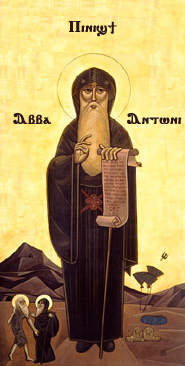
Eastern Christian monasticism is the life followed by monks and nuns of the Eastern Orthodox Church, Oriental Orthodoxy, the Church of the East and some Eastern Catholic Churches.

The Patriarchal Stavropegic Monastery of St John the Baptist is a monastic community for both men and women, directly under the Ecumenical Patriarchate. It is located in Tolleshunt Knights, near Maldon, Essex, in England, and is the oldest Orthodox religious community in the UK.
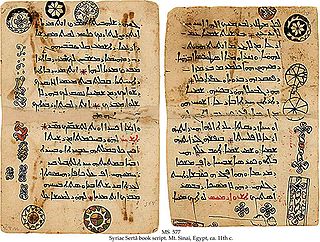
Irmologion is a liturgical book of the Eastern Orthodox Church and those Eastern Catholic Churches which follow the Byzantine Rite. It contains irmoi organised in sequences of odes and such a sequence was called canon. These canons of nine, eight, four or three odes are supposed to be chanted during the morning service (Orthros). The book Irmologion derives from heirmos which means 'link'. The irmos is a melodic model which preceded the composition of the odes. According to the etymology, the book 'collects' the irmoi.
The Lity or Litiyá is a festive religious procession, followed by intercessions, which augments great vespers in the Eastern Orthodox and Byzantine Catholic churches on important feast days. Following a lity is another liturgical action, an artoklasia, and either of these terms may be used to describe both liturgical actions collectively.

A liturgical book, or service book, is a book published by the authority of a church body that contains the text and directions for the liturgy of its official religious services.
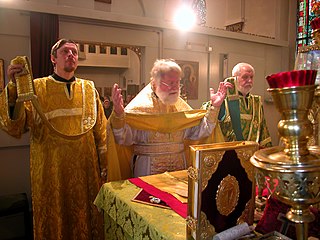
The Cherubikon is the usual Cherubic Hymn sung at the Great Entrance of the Byzantine liturgy.

Saint Sava, known as the Enlightener or the Illuminator, was a Serbian prince and Orthodox monk, the first Archbishop of the autocephalous Serbian Church, the founder of Serbian law, and a diplomat.
